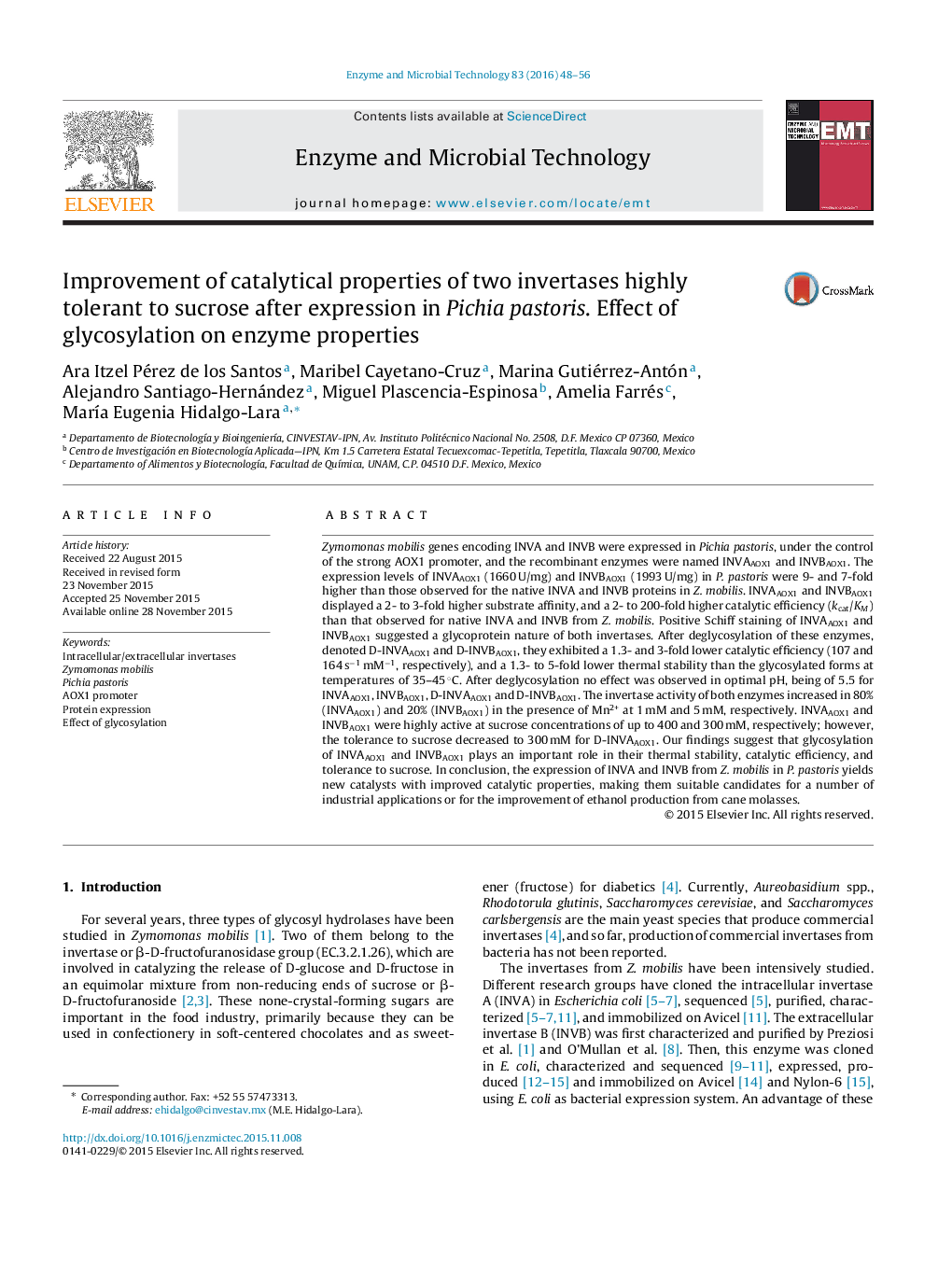| Article ID | Journal | Published Year | Pages | File Type |
|---|---|---|---|---|
| 16837 | Enzyme and Microbial Technology | 2016 | 9 Pages |
•Successful expression of invertases with high sucrose tolerance (up to 300–400 mM).•Production of recombinant invertases in yeast is higher than that of native enzymes.•Recombinant invertases expressed in P. pastoris show different carbohydrate content.•Glycosylated recombinant invertases display improvement of kinetic properties.•Glycosylation plays a key role in high sucrose tolerance of recombinant INVA.
Zymomonas mobilis genes encoding INVA and INVB were expressed in Pichia pastoris, under the control of the strong AOX1 promoter, and the recombinant enzymes were named INVAAOX1 and INVBAOX1. The expression levels of INVAAOX1 (1660 U/mg) and INVBAOX1 (1993 U/mg) in P. pastoris were 9- and 7-fold higher than those observed for the native INVA and INVB proteins in Z. mobilis. INVAAOX1 and INVBAOX1 displayed a 2- to 3-fold higher substrate affinity, and a 2- to 200-fold higher catalytic efficiency (kcat/KM) than that observed for native INVA and INVB from Z. mobilis. Positive Schiff staining of INVAAOX1 and INVBAOX1 suggested a glycoprotein nature of both invertases. After deglycosylation of these enzymes, denoted D-INVAAOX1 and D-INVBAOX1, they exhibited a 1.3- and 3-fold lower catalytic efficiency (107 and 164 s−1 mM−1, respectively), and a 1.3- to 5-fold lower thermal stability than the glycosylated forms at temperatures of 35–45 °C. After deglycosylation no effect was observed in optimal pH, being of 5.5 for INVAAOX1, INVBAOX1, D-INVAAOX1 and D-INVBAOX1. The invertase activity of both enzymes increased in 80% (INVAAOX1) and 20% (INVBAOX1) in the presence of Mn2+ at 1 mM and 5 mM, respectively. INVAAOX1 and INVBAOX1 were highly active at sucrose concentrations of up to 400 and 300 mM, respectively; however, the tolerance to sucrose decreased to 300 mM for D-INVAAOX1. Our findings suggest that glycosylation of INVAAOX1 and INVBAOX1 plays an important role in their thermal stability, catalytic efficiency, and tolerance to sucrose. In conclusion, the expression of INVA and INVB from Z. mobilis in P. pastoris yields new catalysts with improved catalytic properties, making them suitable candidates for a number of industrial applications or for the improvement of ethanol production from cane molasses.
Graphical abstractFigure optionsDownload full-size imageDownload as PowerPoint slide
